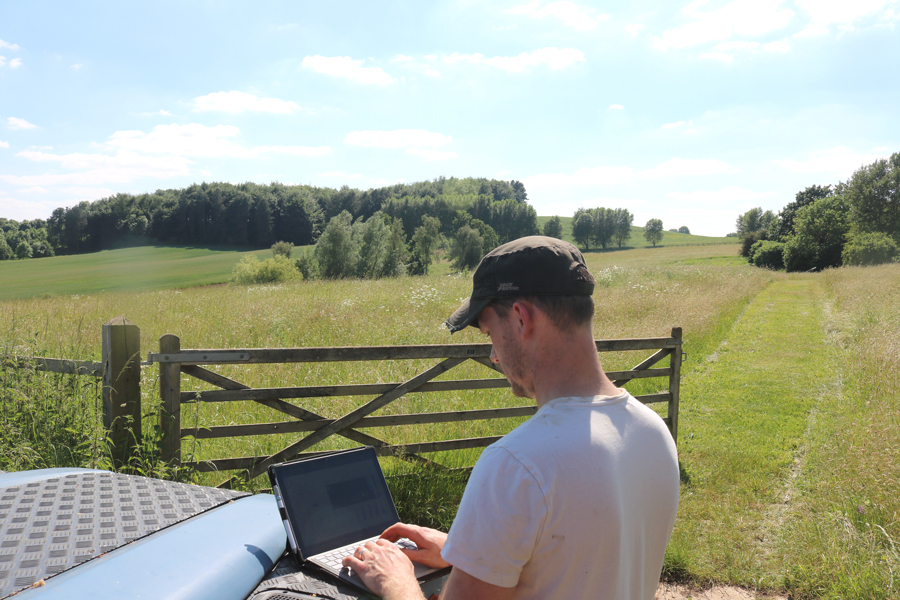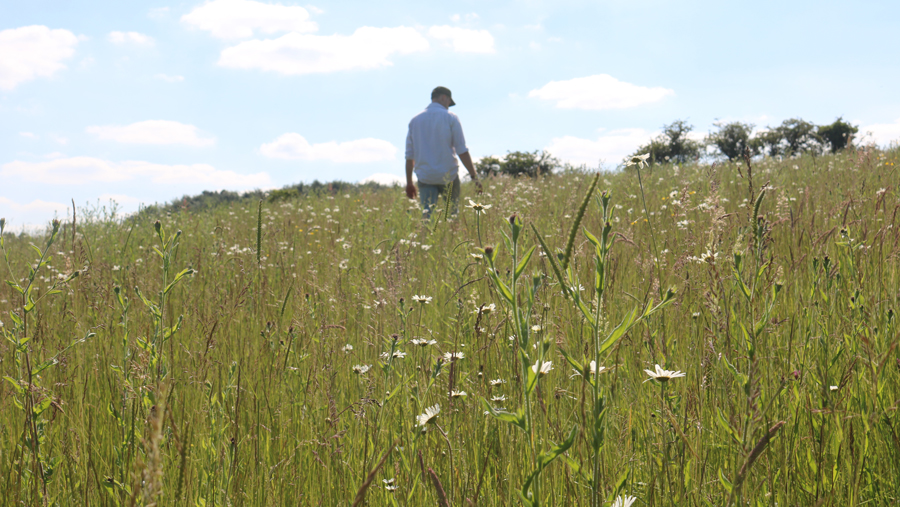Seven steps to generating income from your natural capital
7th December 2021
Carbon credits and biodiversity tokens provide farmers with potentially significant new income streams, but how do they work? Louisa Knocker, senior manager at Trinity Natural Capital Markets, explains.

Learn to love your data – transactions in natural capital markets are likely to be digital, so time spent getting your records aligned is time well spent.
The world has set ambitious climate change targets. Farming, with its large capacity to sequester carbon in biomass and soils, is well placed to provide solutions. Markets are now opening, offering good prices for the high-quality carbon credits and biodiversity tokens farmers can provide.
What’s crucial, though, is a system that keeps you in control, in terms of how you generate your credits and retain complete ownership of the valuable data you have. That’ll ensure you have access to the widest possible demand in the natural capital market and don’t sell out to a deal you later regret.
The following seven steps explain how:
Step 1 Eligibility
Firstly, learn to love your farm data and digitise it. If you keep records in Gatekeeper or Muddy Boots, the data can feed straight into Sandy. This is a digital assistant that accurately measures the environmental performance of natural capital on your farm – that’s mainly carbon, biodiversity, and water protection. To be eligible to generate carbon credits, you have to reduce your carbon footprint through practices additional to what would have happened without the carbon market. You don’t need to be at net zero to get started.
Step 2 Set the Farm Baseline
The key is to be able to measure, manage and provide digital evidence of your starting point. This baseline summarises exactly where your current farm practices have placed you on annual emissions – any reductions from this starting point will generate credits. Historical management information is important to determine your baseline and Sandy ensures your reporting is realistic and credible.
Step 3 Explore and schedule practices
Consider the choices you have to improve on your current carbon and biodiversity metrics and develop a plan going forward. You can, for example, set a target to reach net zero in a given timeframe. You decide what actions you want to take, such as reduced cultivations. Sandy recommends the optimal path for your enterprise and you can compare the cost, efficiency and yield from the proposed practices over a certain number of years and see the impact on cashflow.

Natural capital markets offer the opportunity for a new income stream to reward your environmental achievements.
Step 4 Check the results
Commit to your chosen plan and begin measuring it consistently over time – you can see what it would achieve for your carbon credits. You may be able to increase the value of carbon credits through co-benefits, which recognise biodiversity (wildlife or nature) gains or water protection work on your land.
Once you have accurate data, evidence of your carbon and biodiversity actions and a forward plan, you can begin preparing contractual arrangements with Trinity NCM. There are different contract terms depending on whether you are the farm owner or tenant, whether you are forward contracting or spot trading.
Step 6 Implement and verify practices
Once the contract is agreed you can begin to implement the practices you planned within the timescales you chose. A carbon footprint is carried out each year to continue measuring your net carbon balance and confirm the carbon credits are being generated. Third-party auditors will look at your evidence, then verify and confirm your credits.
Step 7 Get rewarded
There are three ways to sell your carbon credits:
1. Sell on the open NCM marketplace by setting a minimum price and wait for bids to come in.
2. Sell to corporate investors, a pre-qualified buyer, who tend to set the price and criteria themselves.
3. Sell or barter the credits with businesses you already have a relationship with such as processors, retailers or other land managers.
Trinity NCM launched in October and will open for commercial transactions following a piloting period on 11th Jan 2022.
To find out more, why not attend a Natural Capital webinar? www.trinityagtech.com/request-demo
